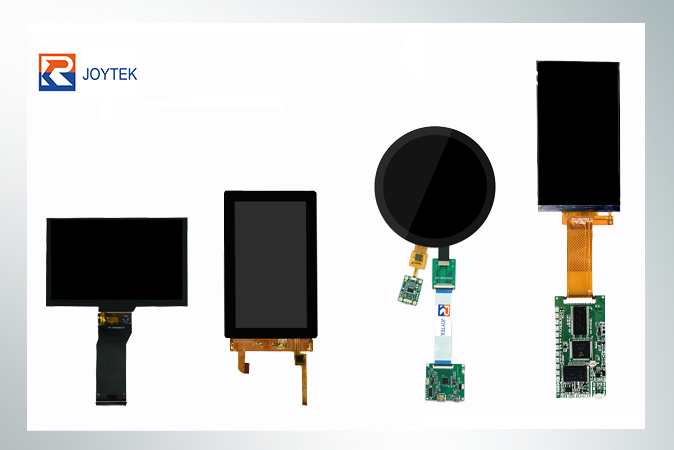In today’s technological era, different type display have become an integral part of various electronic devices. Whether it’s a smartphone, tablet, gaming console, or even an industrial control system, having a high-quality display is crucial for delivering an immersive and user-friendly experience. One such display option that has gained significant popularity is the 5-inch TFT LCD display. With its compact size and versatile features, it has become a preferred choice for numerous customized projects.
A TFT (Thin Film Transistor) LCD (Liquid Crystal Display) is a type of flat-panel display that uses thin-film transistor technology to enhance the quality and performance of traditional LCDs. These displays offer several advantages over other display technologies, including better image quality, faster response times, wider viewing angles, and lower power consumption. These features make TFT LCD displays an excellent choice for a wide range of applications.
The following is our 5 inch TFT display, please check the list:
| Size | Model | Resolution | Interface | Luminance | Pin connection | Active area(mm) | Display mode | Storage temperature |
| 5″ | RV050YMP-J40 | 1080*1080 | mipi-DSI | 350nit | 50pin | 127.008(H)*127.008(V) | IPS | -30℃~75℃ |
| 5″ | RT050WVGM-350 | 800*480 | RGB | 350nit | 40pin | 108(H)*64.8(V) | IPS | -30℃~80℃ |
| 5″ | RV050HDM-310-31 | 720*1280 | mipi-DSI | 310nit | 31pin | 61.78×109.82 | IPS | -30℃~70℃ |
| 5″ | RV050FWM-520-45 | 480*854 | 3spi+RGB | 520nit | 45pin | 61.632*109.6536 | IPS | -30℃~80℃ |
| 5″ | RV050FHM-31-K28 | 1080*1920 | MIPI | 2800nit | 31pin | 61.88*110.02 | IPS | -30℃~80℃ |
| 5″ | RV050FHP-550-50 | 1080*1920 | MIPI | 550nit | 50pin | 61.88 ×110.02 | IPS | -30℃~70℃ |
These 5 inch LCD display are support customization, such as brightness, interface, LCD touchscreen, LCD driver board, etc. Our focus is to provide LCD solutions for customers. As long as we receive customer requirements, our engineers will start to evaluate the project and propose solutions. Discuss good plans with customers, if you need engineering support, please Contact Us Now!

When it comes to customized projects, a 5-inch TFT LCD display can be incredibly useful. Here are some potential applications where a customized 5-inch TFT LCD display can make a significant impact:
Embedded Systems: If you’re working on an embedded system project, a 5-inch TFT LCD display can serve as a compact and interactive user interface. It can display real-time data, graphical user interfaces (GUIs), and provide touch functionality for seamless user interaction.
Industrial Control Systems: In industrial environments, having a reliable and durable display is crucial. A 5-inch TFT LCD screen can withstand harsh conditions, such as extreme temperatures, dust, and vibrations. It can be used for monitoring and controlling industrial processes, displaying critical information, and enabling operators to make informed decisions.
Medical Devices: Medical equipment often requires compact yet high-resolution displays. A 5-inch TFT LCD display module can be integrated into medical devices like patient monitors, portable ultrasound systems, or diagnostic equipment, providing healthcare professionals with clear visuals and intuitive user interfaces.
Internet of Things (IoT) Devices: The IoT industry is rapidly growing, and devices in this domain often require small yet efficient displays. A 5-inch TFT LCD module can be utilized in IoT applications such as smart home control panels, wearable devices, and connected appliances, offering users a visually appealing and interactive experience.
DIY Electronics: For electronics enthusiasts and hobbyists, a 5-inch LCD display can open up a world of possibilities. Whether you’re building a custom gaming console, a home automation system, or a multimedia device, integrating a vibrant display can elevate your project to the next level.
Now that you understand the potential applications let’s talk about how to get a 5-inch TFT LCD display for your customized projects. Several reputable manufacturers and suppliers offer customizable TFT LCD displays tailored to your specific requirements. Here are a few key considerations when sourcing a display:
Resolution: Determine the desired resolution for your project. A higher resolution will result in sharper and more detailed images but may come at a higher cost.
Interface: Check the compatibility of the display’s interface with your project’s requirements. Common interfaces include HDMI, SPI, I2C, and LVDS. Ensure that your display supports the interface your project requires.
Touch Functionality: If your project requires touch input, opt for a TFT LCD display with capacitive or resistive touch technology. Capacitive touchscreens offer a more responsive and multi-touch experience, while resistive touchscreens are more cost-effective and can be operated with gloves or styluses.
More knowledge about Capacitive touchscreens and responsive touchscreens is here:
Which Is Better: Resistive Touchscreen Or Capacitive Touchscreen?
5 Types Of Touchscreen With Their Pros And Cons
Brightness and Viewing Angle: Consider the ambient lighting conditions in which your project will be used. Ensure that the display has sufficient brightness and wide viewing angles to maintain visibility in various environments.
Customization options: Some LCD manufacturers provide customization options for LCD display module, such as custom backlight color, screen brightness, available interfaces, surface treatment to achieve a special purpose, such as waterproof, pressure-proof, outdoor use, etc. We accept customization, please feel free to contact us.


